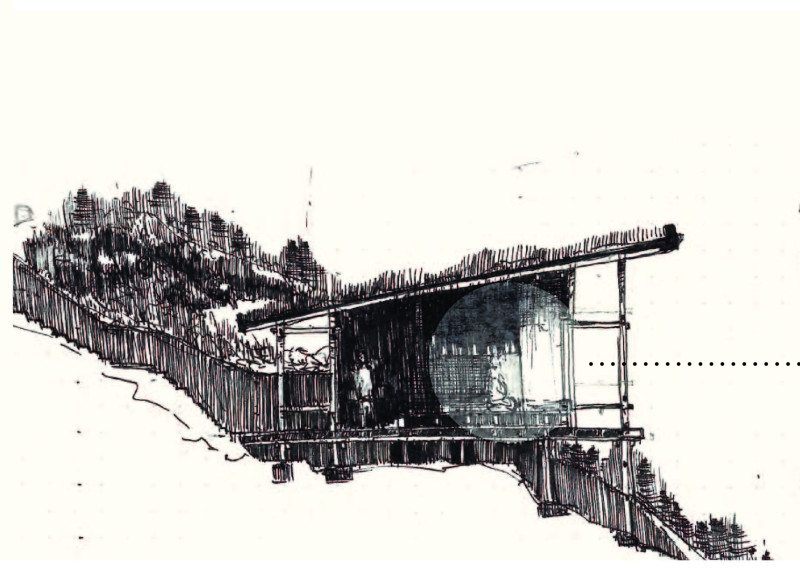5 key facts about this project
The Charred Cabin is a meditation and acupuncture retreat that connects closely with its natural surroundings. Situated by a river and framed by hills, it focuses on offering a calming space designed for therapeutic sessions. The overall design aims to create an atmosphere of peace, enhancing the connection between those using the space and the landscape around them.
Spatial Arrangement
The interior layout is open and flexible, allowing for easy movement and a sense of spaciousness. This design choice accommodates different types of therapeutic practices while maximizing natural light exposure. By orienting the cabin towards the southwest, it captures sunlight during the winter, providing warmth and illuminating the interior. At the same time, occupants enjoy wide views of the surrounding environment, which adds to the soothing experience.
Structural Approach
Timber stilts elevate the cabin, creating the effect that it is floating above the landscape. This structural design not only gives an interesting visual aspect but also emphasizes the relationship between the building and its site. The use of this lightweight framework contributes to a modern appearance, making the cabin feel less intrusive and more integrated with its natural backdrop.
Sustainable Design
Sustainability plays a vital role in the structure's conception. Natural ventilation is designed into the cabin, ensuring comfort during warmer days, while a Japanese-style fire pit inside provides warmth when temperatures drop. In addition, a rainwater storage tank located at the base helps manage water use effectively, demonstrating a commitment to responsible environmental practices.
Material Choices
The cabin's name comes from its charred timber cladding, an important feature that enhances both durability and visual appeal. This choice connects the structure to the nearby pine forest and adds a distinct character to the building. The charred finish not only protects the wood but also helps the cabin blend into its surroundings, creating a welcoming space for visitors.
Low windows invite occupants to engage with the views outside, offering a sense of closeness to nature while allowing for privacy inside. This careful consideration of design elements ultimately supports a tranquil environment, perfect for meditation and healing practices.



















































